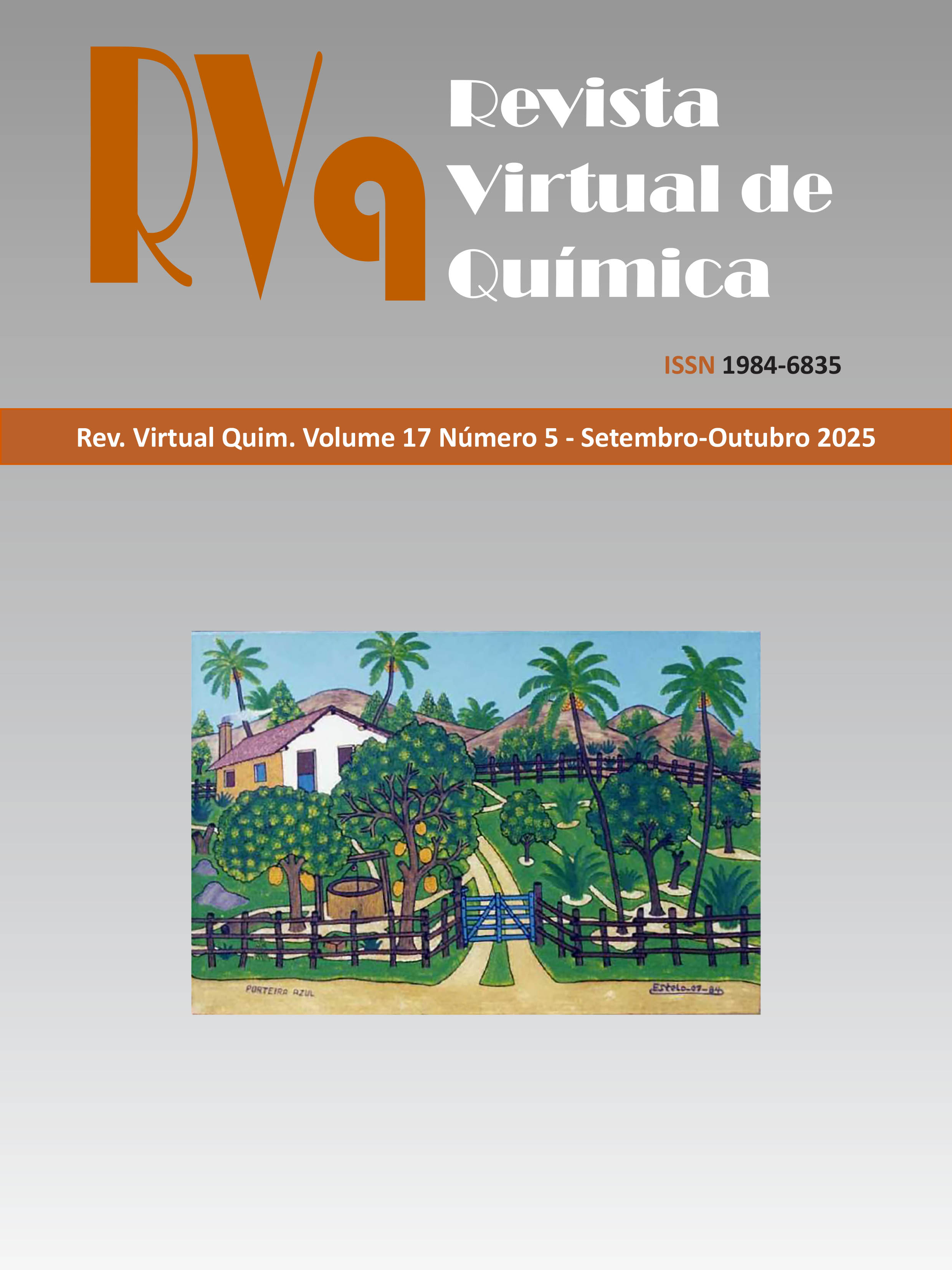Caracterização Química e Espectroscópica de Ácidos Húmicos Isolados da Vermicompostagem de Diferentes Fontes de Biomassas Agrícolas
DOI:
https://doi.org/10.21577/1984-6835.20250037Resumo
Determining the chemical and structural characteristics of humic acids is essential to understand the
behavior of these compounds in nature. However, their composition varies according to the extraction
source. The objective of this study was to characterize chemically and spectroscopically humic acids
from vermicomposting of agricultural biomass from different sources. Vermicomposting was performed
separately, using crop residues of oleaginous, saccharide, starchy and lignocellulosic origins, with cattle
manure in a 30:1 ratio. Humic acids were extracted and characterized according to acidity, E4/E6 ratio
(ratio between absorbances at 465 and 665 nm), fluorescence emission intensity, elemental composition,
infrared spectroscopy and nuclear magnetic resonance. Higher carbon contents were found in humic acids
of saccharide and oleaginous origin, indicating greater quality and functionality of these compounds in
soil and in environmental applications. The E4/E6 ratio was lower in humic acids of saccharide origin, an
aspect indicative of a higher degree of humification and stability, richer in aromatic rings. The infrared
emission, fluorescence and nuclear magnetic resonance spectra were similar among the humic compounds.
This result reveals similarity in the chemical composition and functionality of the spectra, with higher
intensities observed in humic acids of saccharide origin.
Downloads
Publicado
Edição
Seção
Licença
Copyright (c) 2025 Revista Virtual de Química

Este trabalho está licenciado sob uma licença Creative Commons Attribution 4.0 International License.
Autores que publicam nesta revista concordam com os seguintes termos:
Os direitos autorais para artigos publicados nesta revista são do autor, com direitos de primeira publicação para a revista. Em virtude do acesso público, os artigos são de uso gratuito em aplicações educacionais e não-comerciais desde que com reconhecimento da autoria e da publicação nesta revista.

